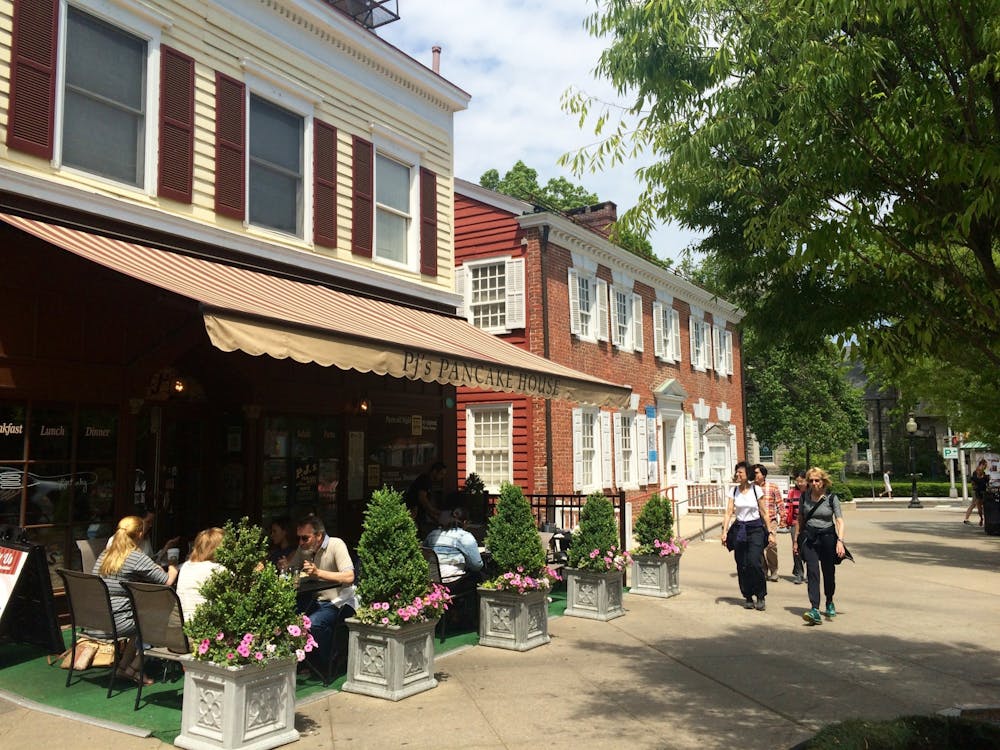This article may perhaps be better titled, "Beating the track off", for on one Thursday evening, I found myself stomping (quietly) on the fields of the Institute of Advanced Studies to frighten the crickets into silence. Just so a recording of John Cage's "Sonatas and Interludes" could proceed without the chirrup of overeager chorus bugs.
Thus began my adventure with John Cage, Morton Feldman and Christian Wolff, collectively known as the New York School of (new) music, composers whose works were performed at the "Recent Pasts 20/21: An Exploration in New Music" series held at the Institute of Advanced Studies.
The performers were two of Cage's proteges: pianist Margaret Leng Tan and vocalist Joan La Barbara, who each had an evening to perform and pay homage to the composers with samplings of each composer's work before intermission, and devoting the rest of the concert to the composers' magnum opus.
For Cage, Tan provided a thrilling interpretation of Cage's "Sonatas and Interludes" played on prepared piano. "Prepared" hardly does justice to the amount of energy Tan has to spend leaning over into the guts of the Steinway, affixing screws, nuts, bolts and blue tack onto the strings, to endow almost every note with an unpredictable set of overtones, jangles and buzzes.
For Feldman, la Barbara hummed and harmonized "Three voices for Joan La Barbara" with recordings of her own voice played over two speakers on stage, and with a (few) quiet voice(s) encompassed the audience in a sonar bubble, like a bear wrapped by falling snow.
Composer Christian Wolff, the sole surviving member of the New York School, gave a candid lecture two weeks ago on their place in history, retelling chance meetings, lengthy conversations and music making. In an afternoon, he encapsulated many of the events that would enter music lore, like pianist David Tudor's performance of Cage's legendary silent pieces in 1952, where the performer sat silent at the piano without playing a work that had three movements and lasted four minutes and thirty-three seconds.
The piece remains the masterpiece of American experimental music that inspired, influenced, antagonized and provoked so many after. Ever so often, as with "Rauschenberg's White Paintings", large plain white oil on canvas that are 4'33"s analog in the visual arts world, the question arises, "Is this Music? Is this Art?"
The question better phrased might be: "What is experimental music?" and what is an experiment. By definition, it is a test under controlled conditions that seeks to demonstrate a known truth, or an innovative act or procedure.
For Wolff, it is both. "Experimental is when I've thrown in my lot, hoping that the world can be different, better." By innovating and creating, he and his late peers hope for their work to take men and women to a place of truth where a being of life can be open to divine influences.
In a time when music is becoming increasingly homogenized by the tide of popular music, experimental music from the 1950s sits shakily at the margins. Yet Cage's words quells any fears of such music falling off the proverbial wall: "Life goes on very well without me, and that will explain to you my silent piece, 4'33" . . . One need not fear about the future of music." As Tan put it, "We are all Cage's spiritual children." Amen to that.
The series "Recent Pasts 20/21: An Exploration in New Music" continues for the season. Tickets are free and open to the public. For information, please visit www.admin.ias.edu/air/ or call (609) 734-8228.








